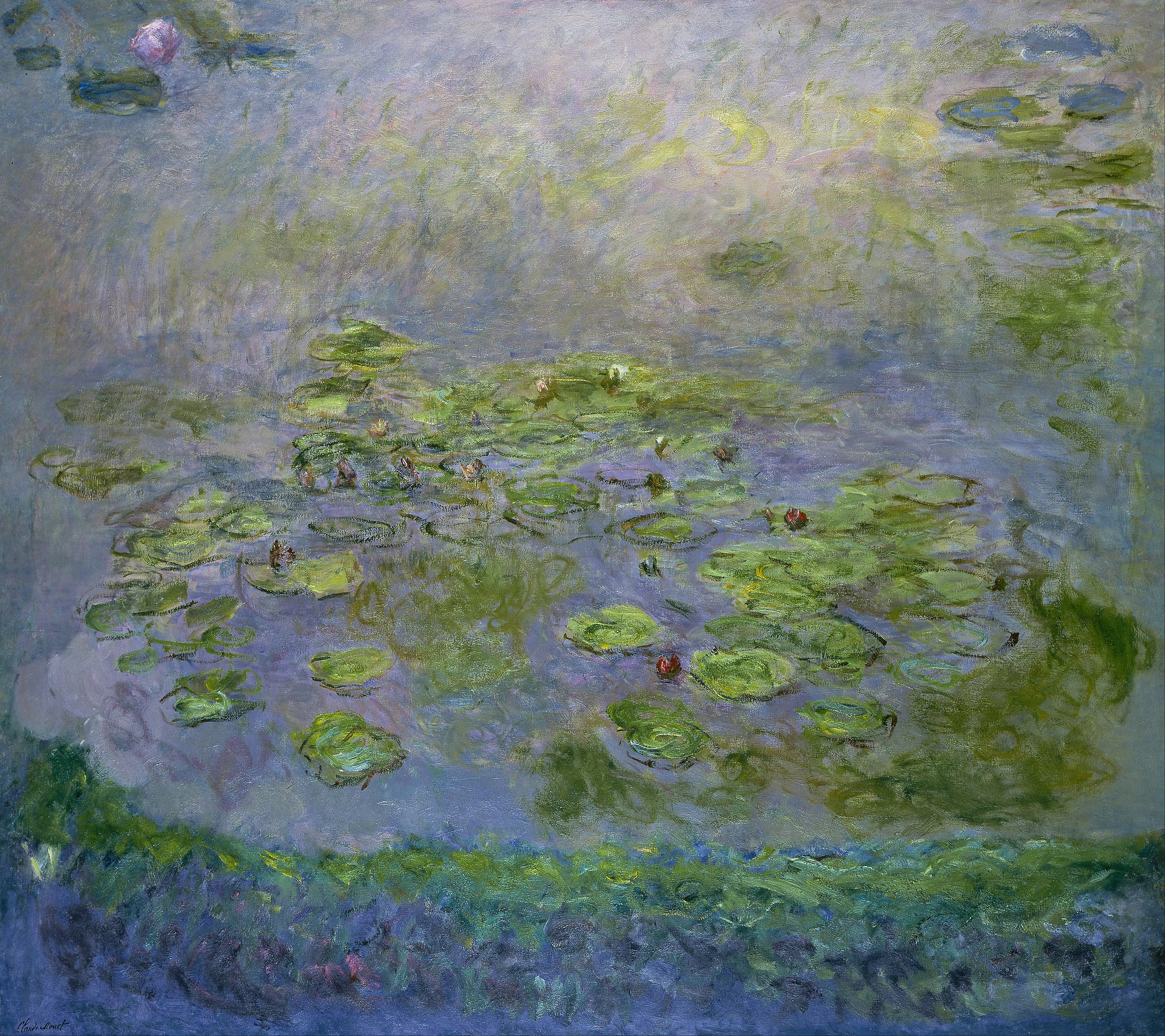The years from the summer of 1914 until Monet's death in 1926 comprise a period of extraordinary activity in the artist's career. Although he is thought to have destroyed several canvases in frustration—by boot, knife, or fire—nonetheless 200 generally large paintings remain from this period. The majority of these relate to the great cycle of water lily paintings.
The Waterlilies we present today is large. These paintings were worked in the open air; Monet managed to set them up with the help of his gardeners. A photograph taken in the summer of 1915 shows Monet beside the pond, perched on a high stool, and shaded by an enormous umbrella, working on one of these large studies.
The fresh, spontaneous brushstrokes of today's painting, and its particularity of observation, including some unusual, almost obtrusive compositional features, suggest that it was at least begun in front of the motif. Monet started the painting by blocking in the curve of the bank at his feet in a vertical plane of blue paint that might initially have been suggested by the shadow in the water of the Japanese bridge or the pond bank but was subsequently overpainted along the inner curved edge with chopped brushstrokes of green and yellow that clearly indicate the grassy verge of the bank itself. This is an unusually strong and specific foreground element in Monet's pond-side studies. More often it is the dark reflection of overhanging trees or the fringes of irises or agapanthus growing on the bank that frame the expanse of the pond without interrupting the continuous water surface.
If you would like to learn more about the super interesting and abstract last years of Monet's life, please check our Mega Impressionism Course. : )
P.S. Here's an insight into looking through the eyes of Claude Monet.


 Claude Monet
Claude Monet